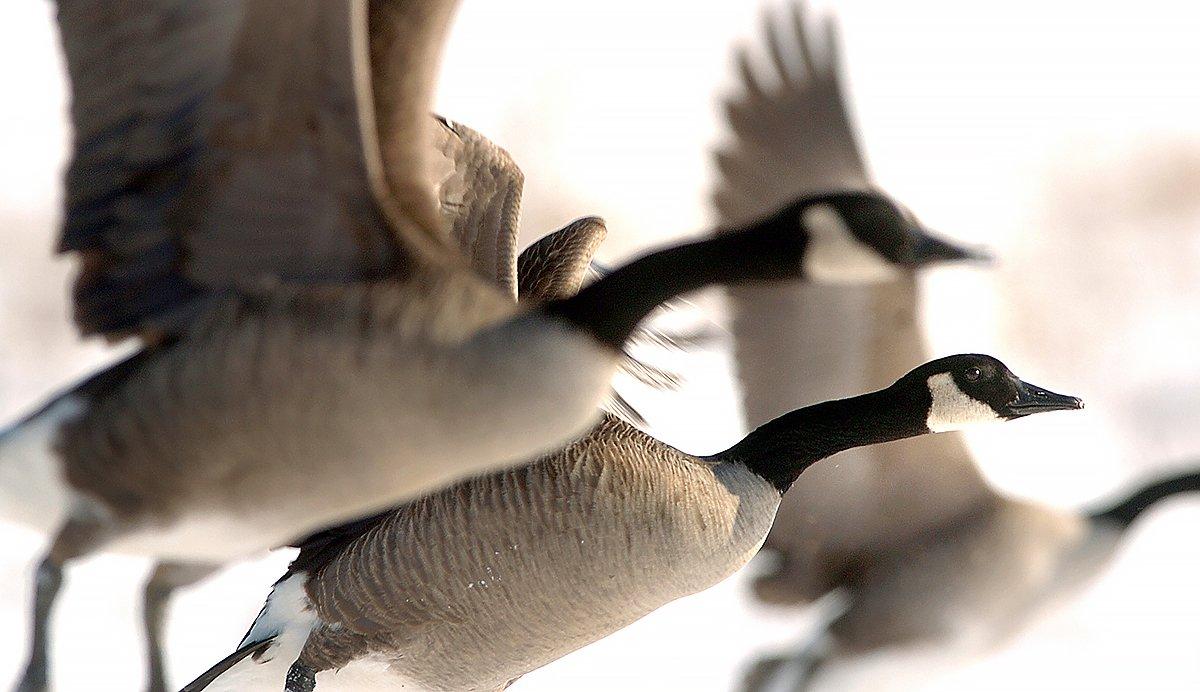Use these offbeat methods to kill honkers when other guys give up

But if you've spent enough time in a layout blind, you know geese don't always follow the script. In fact, honkers can be downright frustrating, changing fields daily or almost disappearing, especially if they've been pressured or food sources are in flux.
Tough times call for unconventional approaches. When geese get tough this season, try these often-overlooked strategies.
Play the Greens
Everyone knows honkers love waste grain: corn, beans, wheat, oats, barley and other row crops. But they also chow down on greens, including grass and cut alfalfa. Such spots become especially productive when food sources are in transition.
In the North and Midwest, for example, farmers usually cut oat, rye and wheat fields just before mid-August or September nuisance-goose season openers. Birds hammer these fields daily, offering great hunting opportunities. However, honkers can consume the waste grain at those spots in a week or less. With the bean harvest weeks away and corn harvest spotty — even for silage or high-moisture corn for livestock — geese must find other feeding grounds. Look no farther than recently cut hay (alfalfa) fields, especially those near large roosting waters.
Scout hay fields just like you would any other field: drive, glass and seek permission from landowners. These spots also offer another benefit: cover. Even mowed hay fields provide more concealment than you'll find in oat, wheat, rye, barley, bean or stalk-chopped corn fields. Just make sure your blinds or camo blend in with the bright green of the alfalfa.
Midmorning Loafers
It can be frustrating when you can't find a hot field. You don't want to hunt roost water — and you shouldn't — so you might think you're out of options. But the daily routine of early- to mid-season geese provides opportunity. Usually, honkers roost on big water and then feed in fields soon after sunrise. They'll also hit fields in the evening before returning to roosting water. During midday, however, many geese loaf at smaller waters, such as marshes, sloughs, stock ponds, reclamation ponds and small lakes.
Finding these spots can be tougher than locating honkers in a field, as many small waters are hidden from roads by terrain or vegetation. Try to observe birds as they leave a feeding spot and head to loaf. Note their travel direction, and then use aerial photos to identify potential loafing water. Then, watch those spots to note whether honkers fly in and out.
Consider a mix of floating decoys and field blocks for loafing areas. Geese like such spots for the water, of course, but many of them lounge or sleep on shore, especially if the banks are exposed or grassy. Often, a few decoys suffice.
Two caveats: This doesn't work as well when it rains, as geese might spend most of the day in fields during wet weather. Also, when the bitter cold of the late season arrives, honkers might stay on the roost all day and make only one feeding flight, often just before shooting hours in the evening.
Pass the Honker, Please
Pass-shooting gets a bad rap, and it's easy to see why. Often, the term conjures up images of bloodthirsty buffoons flinging steel at geese at the edge or out of range near refuges. That's too bad, because ethical, common-sense pass-shooting can be lethal.
Try to identify flight lines geese take to and from roosts or feeding areas, and then set up near cover along those paths. For example, friends and I used to hunker by a ditch bank about 100 yards from a large river where geese always roosted. The honkers almost always flew north at first light, and we'd intercept them on the way, taking birds as they passed over at 30 to 40 yards.
Likewise, when we couldn't hunt the X at a private field, buddies and I would secure permission for neighboring areas and then set up along fence lines or ditch banks downwind of the hotspot to pass-shoot birds as they flew in and out. We had to limit ourselves to sure-kill-close shots and make sure to drop geese on our side of the fence, but we typically enjoyed good action in such situations.
Scout flight patterns, find a good ambush spot and vow to take only sure shots. It can be that simple.
Think Outside the Pit
Don't grumble when geese get weird this fall. Redouble your scouting efforts, and get creative to find legal, ethical, offbeat tactics to cash in. Your hunt might not be as aesthetically pleasing as a late-season cornfield shoot, but who cares? You'll be busy cleaning birds while your buddies wait for those textbook days.
Click here for more Realtree waterfowl hunting content. And check us out on Facebook.






